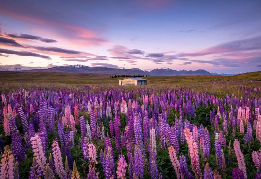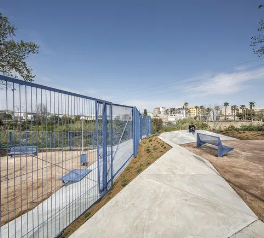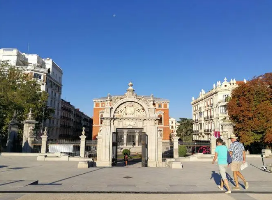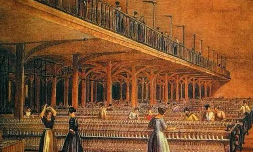The Edge of the world, Nature’s Geography textbook New Zealand
9 min read
New Zealand, next door to Australia, has long been favored by tourists around the world for its 100% pure experience. With the success of the Lord of the Rings and The Hobbit movies, New Zealand, with its stunning scenery, has suddenly become a real-life middle-Earth paradise.As one of the last colonies to be discovered, there are so many fascinating places here that its isolation seems like one of the last places left to human society. The North Island is full of volcanoes and hot springs, and the South Island is full of glaciers and lakes, and two islands in the north and south constitute another parallel world on this planet, giving people the pure and pure earth itself should look like.
If you’re planning a future vacation to New Zealand, check out the following places to experience the beauty of New Zealand.
Colorful – Lu ice flower.
Every year from November to the end of December, the South Island of New Zealand is covered with a sea of colorful and colorful ice flowers, which attract tourists and photographers from all over the world when they bloom.
It is said that a lady who had just immigrated here from Britain looked at the vehicles coming and going on the deserted highway every day, and felt bored. One day, she had a sudden idea to sprinkle the seeds of Lu ice flowers from her hometown on both sides of the highway, but the next summer, the beautiful Lu ice flowers actually blossomed… To this day, in early summer, flowers bloom all over New Zealand’s North and South Islands.
There are many colors of flowers, the most common in New Zealand is purple blue or pink. When the Lushan is in full bloom all over the mountains, you feel as if you are in a dreamlike fairy tale world, accompanied by the faint fragrance of flowers, which will make every visitor intoxicated and fascinated, like a dream.
Suggestions:
The flowering season depends on the weather, but it will be delayed a little further south. In addition, the New Zealand Environmental Protection Department has been defined as an invasive harmful plant, which will directly or indirectly threaten the safety of New Zealand native species, so it will gradually increase efforts to eradicate. In this case, you should go there as soon as possible to enjoy the boundless sea of Lu Ice flowers.
Alpine snow and ice — Mount Cook.
Alpine in its purest form, Mount Cook National Park (also known as Aoraki National Park) boasts New Zealand’s highest mountain range and longest glacier.
The snow-capped summit of Mount Cook is where Sir Edmund Hillary honed his climbing skills, laying the groundwork for the successful conquest of Everest. Follow the Hooker Trail for a stunning view of the region’s mountains and glaciers.
The Tasman Glacier in the valley is one of the longest glaciers in the world. It is 27 kilometers long. It is formed by the snowfall on the top of the mountain which is 2,700 meters above sea level.
Join the Helicopter Glacier Hike, which follows the trail of glaciers through winding canyons, and since glaciers change throughout the season, the views are rarely the same at once.
Suggestions:
The best way to see the Tasman Glacial lake is by boat, as you enter the ice world as you cruise through large and small icebergs.
Clear blue – pure blue spring.
Blue Springs is located in the central North Island, near the famous Tiwaiho Trail. It is internationally renowned for its pure blue water quality. About 60% of bottled water in New Zealand comes from Blue Spring, which is truly pollution-free and natural high-quality water source.
The water, which originates from the Mamaku Plateau and takes 50 to 100 years to filter through layers of water, can flow 42 cubic meters per minute and is kept at a constant temperature of 11 degrees Celsius in winter and summer.
The blue spring is flanked by crinkled underwater plants, which stretch like human hair as the water passes over them, adding more vividness to the beautiful blue spring.
Suggestions:
The Blue Springs hike takes about an hour and a half each way and begins on WhitesRoad (National Highway 28) near Putaruru. Also start at LeslieRoad, a shorter walk that takes only 15 minutes each way to Blue Springs.
Picturesque – Milford Sound.
Described by British writer Rudyard Kipling as “the eighth wonder of the world”, Milford Fiord was formed during the long Ice Age when it was cut by the flow of glaciers and then flooded by the sea to make the valley sink. It is located on the west coast of the South Island and extends 22 kilometers inland.
In the V-shaped fjord, steep cliffs rise to the clouds, waterfalls fall down the glacier, outline a series of natural landscape galleries. Mattel Peak, which rises vertically out of the sea at a height of 1,692 meters, the deepest part of the fjord at 265 meters, and Bowen Falls, which drop 160 meters, are among the most symbolic sights in the fjord.
Rain or shine, Milford Sound is a place of picturesque beauty. The peaks on either side of the fjord rise out of the deep water, and on a clear day the view is of rolling hills shrouded in mist. When it rains heavily, thousands of cascades of water, large and small, soar from the sheer cliffs in a natural symphony.
Suggestions:
Fjords by boat are one of the most popular choices. There are a variety of boat types, depending on the time and route and your preference. There are also sightseeing flights, sea kayaking trips and diving trips.
Fantasy dream – Hobbit Village.
The Lord of the Rings trilogy and the Hobbit films were filmed on location, and it is the only one of the Lord of the Rings films that has been completely preserved. If you are a fan of the Lord of the Rings movie, be sure to come here to experience the fantasy world of the movie.
There are 44 Hobbit caves in the current village, with verdant hillsides dotted with mirror-like lakes and scattered semi-circular hole-in-the-ground huts, along with stone arched Bridges, mountain paths, hedges and gardens, creating an idyllic picture of fantasy.
During the 2-hour tour, your guide will take you to the banquet tree, Bilbo’s Bag End House and other iconic landmarks that appeared in the movies, detailing the before and after scenes of the movie, and finish with free ginger beer at the Green Dragon Tavern. The tavern is completely restored to the look of the movie, with thatched roofs, mud and stone walls, and unpretentious wooden tables and chairs that make you feel like you’ve really stepped into a movie.
Suggestions:
There are night Tours of Hobbit Village every Wednesday and Sunday night, starting from the Shires Rest Cafe and enjoying a hobbit dinner at the Green Dragon Tavern. The hobbit Village at night has a mysterious atmosphere. The paths are illuminated by authentic hobbit lanterns. Each visitor who takes part in the night tour will be given a portable lamp to make the journey more magical and hazy.
World famous – Waitomo Glowworm Cave.
Since the early 19th century, Waitomo has become one of the must-see destinations in New Zealand for travelers, thanks to its dreamy firefly caves, varied karst caves, and underground labyrinths of numerous underground rivers and water caves.
Board a small boat inside the cave and paddle, with your guide, out into the dark, into a dreamy blue expanse of starry sky, shining like the confluence of stars against the water.
Endemic to New Zealand and Australia, cave fireflies called GlowWorms lure prey with their bright fluorescent glow, using the mucus in the filaments to prey on them. Due to their harsh requirements on the living environment, they cannot survive in the presence of light and sound, so it is rare to see the publicity materials taken by people in the outside world.
Suggestions:
Waitomo Cave consists of 3 underground caves, each with many different activities. The main activities are: Firefly cruises, cave hiking, abseiling, potholes and black water rafting.
Beautiful scenery Queenstown.
Nestled on the shores of Lake Wakatipu, this popular tourist town is surrounded by majestic mountains with exquisite views. Legend has it that gold prospectors were so taken with the beauty of the surrounding mountains and rivers that they named it “Queenstown” because “it would have been Queen Victoria’s royal backyard”.
Lakes and mountains are reflected here incisively and vividly. No matter in any corner of the city, you can’t help but experience the quiet beauty of deep marrow here. In the daytime, there is always a chair to be found by the lake, giving you a pure heaven and earth. And when the town lights up in the evening, it’s as if this is the boundary between birth and life.
Queenstown is summed up as “an adventure city where you can’t bear to miss the action”. The extreme sports-loving visitor’s paradise offers everything from jet boating, bungee jumping, skydiving, rafting, skiing and tandem paragliding to more than 200 outdoor activities.
Suggestions:
Also close to Queenstown are the former gold rush towns of Clyde and Arrowtown, Lake Wanaka and the nearby ski resorts of Three Cones Peak and Cardona, stunning mountain off-road biking trails, trout and salmon fishing spots, mountain hiking trails and 150 kilometres of bike-and-rail sightseeing that cater to every visitor’s needs.
Volcanic wonders — Tongariro National Park.
Tongariro became New Zealand’s first national park in 1887. In 1993, the park was awarded the World’s first dual World Heritage status, and its natural and cultural values are recognized worldwide. There are 15 recently active or active craters in a linear line stretching northeast. It includes three known active volcanoes, Tongariro, Naruhei and Ruapehu.
Emerald lakes, verdant alpine meadows, and steaming hot springs are dotted around several giant volcanoes. Ancient volcanic rocks, steaming craters, and colorful silica platforms form an amazing natural wonder.
If you’ve never been this close to a volcano, head straight to the Tongariro Trail, where you’ll follow ramps across three mountains and experience the exhilarating sensation of traversing rugged terrain, made even more memorable by steaming fire vents, million-year-old lava and geothermal lakes.
Suggestions:
The best time to visit is from December to February, so don’t miss Taranaki Falls and the lava lines of the erupting volcano, especially if you have enough time to visit Lake Taupo.
Geothermal Wonderland — Waiotapu.
wai-o-tapu, which means “holy water” in Maori, is located 27 kilometers south of Rotorua and is the most famous geothermal park with multiple natural mineral pools of various colors. It has been named “one of the 20 most surreal places in the world”.
The 3km long walking trail leads you to different locations, frothy, boiling mud formed by collapsing mud volcanoes, fluorescent green springs, mineral-rich and colorful hot springs, sulfur pools that resemble a color palette, and so on. Walk back and forth a few times to experience the color changes caused by different lights and shadows.
The world famous Champagne tank, which emits carbon dioxide like champagne bubbles and is surrounded by large amounts of orange mineral deposits, is the largest natural spring in the area. The Knox fountain starts spraying water at 10:15 a.m. every day. The water is sprayed for an hour at a time, sometimes as high as 20 meters.
Suggestions:
Be sure to be safe and never leave the trail to wander around on your own, or go to hot springs on a whim, because there is not only frequent geological activity and high water temperature, but also the water may contain chemical toxins. And don’t forget to visit the Whakarevarewa Maori cultural Village in Rotorua.
Blue peach – Lake Tikapu.
A place that people have been to for a long time to aftertaste, no matter how learned the travel writer can describe its beauty, no matter how professional photographers can not shoot its bright. The lake is a rich turquoise all year round, thanks to the inflow of rock powder from the Southern Alps, and a nearby town of a few hundred people, with the snow-capped mountains in the distance, is as quiet as an arcadia.
In summer, Lu ice flowers filled every corner of the road, to the earth covered with colorful carpet, like a beautiful postcard. People stood among the flowers, facing the cross on the altar of the church, looking at the blue lake and the majestic Southern Alps, marveling at the extraordinary nature and looking forward to the hope of the future.
The night sky over Tikap is quiet and bright, with the Milky Way and large constellations clearly visible. As one of the seven dark night sky reserves in the world, Tikap is one of the few places on Earth where you can still see a full starry sky. Visit from April to September to see the aurora australis, and from December to March, when the Milky Way is at its brightest, the best time for stargazing.






